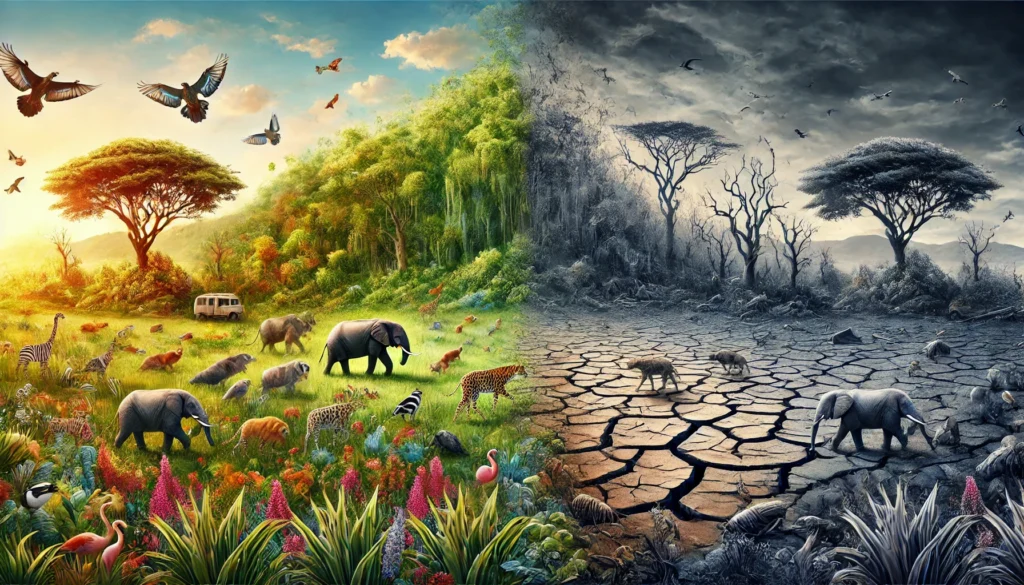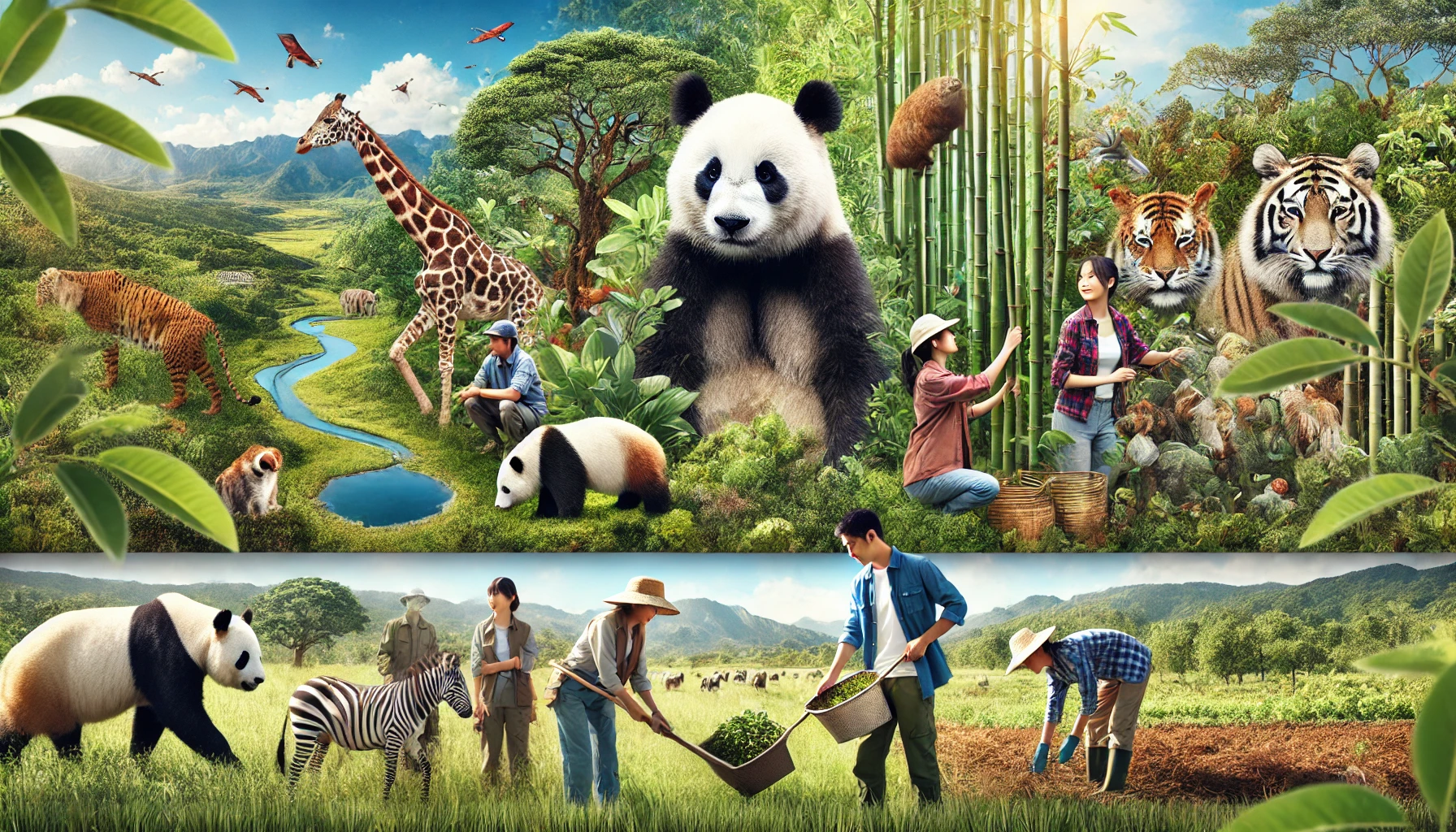Animals are one of the most fascinating aspects of life on Earth. From the tiniest insect to the largest whale, they play a vital role in maintaining the balance of ecosystems while captivating humans with their diversity, behavior, and beauty.
The World of Animals

Animals belong to the kingdom Animalia, encompassing over 1.5 million known species with many more yet to be discovered. They are multicellular, eukaryotic organisms characterized by their ability to move, respond to stimuli, and consume organic matter.
Types of Animals

Animals are broadly categorized into:
- Vertebrates: Animals with a backbone, such as mammals, birds, reptiles, amphibians, and fish.
- Invertebrates: Animals without a backbone, including insects, arachnids, mollusks, and crustaceans.
The Role of Animals in Ecosystems
Animals are crucial for maintaining ecological balance.
- Pollinators: Bees, butterflies, and birds help plants reproduce, ensuring food sources for countless species.
- Decomposers: Insects and scavengers break down organic matter, recycling nutrients into the soil.
- Predators and Prey: They regulate populations, preventing any one species from over-dominating.
Animals and Human Connection
For centuries, animals have been companions, laborers, and sources of inspiration for humans.
- Pets: Dogs, cats, and birds provide emotional support and companionship.
- Cultural Significance: Many animals hold symbolic meanings in myths, art, and religions.
- Economic Contribution: Livestock and fish are essential for food, while animals like horses and elephants contribute to labor and tourism.
Threats to Animal Life
Despite their importance, animals face numerous threats due to human activities:
- Habitat Loss: Deforestation and urbanization shrink their living spaces.
- Climate Change: Altered weather patterns disrupt migration, breeding, and food availability.
- Poaching and Exploitation: Illegal hunting and trade endanger many species, like tigers and rhinos.
Conservation Efforts
Protecting animals is essential for sustaining life on Earth. Key conservation strategies include:
- Wildlife Reserves and Sanctuaries: Preserving habitats ensures safe spaces for species to thrive.
- Awareness Campaigns: Educating people about endangered species fosters empathy and action.
- Laws and Treaties: Policies like the Endangered Species Act and international conventions combat exploitation.
Amazing Facts About Animals
- The blue whale is the largest animal, growing up to 100 feet long.
- Octopuses have three hearts and can solve puzzles.
- Elephants mourn their dead, showcasing emotional intelligence.
- Bees communicate through a “waggle dance” to share information about food.
Conclusion

Animals are an integral part of Earth’s biodiversity, offering lessons in survival, adaptation, and coexistence. Protecting them means safeguarding the planet’s future. Whether through simple acts like planting trees or supporting conservation organizations, every effort counts in preserving the incredible world of animals.
Let’s cherish and protect these remarkable creatures that share our planet!
